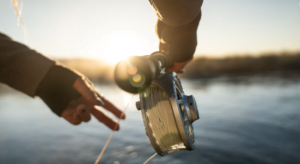
Mathematical Models Can Help to Better Manage Fishing
Many consider fish an important food source. This applies to developing countries, especially to people who can’t afford meat that costs more. Sadly, many marine species are in danger of extinction. This is because of diminishing catches, overfishing, and increasing market prices.
To prevent this, researchers have turned to math. They have developed a mathematical model to use as a predictive tool to manage fishing. Pairing this model with economic and ecological dynamics is ideal. It will provide a good understanding of how fishery systems operate.
To understand depth
The most important factor that fishermen should consider is the depth of their bait, lures, and more. Depth is a crucial mathematical concept in catching fish. It’s important to place the bait in the “strike zone” to succeed. It’s also worth considering the “fall rate” while fishing. Many fishermen use light lures with slow fall rates for weary or easily spooked fish. But trying to catch overfished fish may require more finesse.
Read math textbook to learn the relationship between math and fishing
To use various mathematical methods for fishing, it’s important to learn about them first. Use textbooks and other informational resources to study the relationship between math and fishing. Studying this relationship is of the essence, especially if you want to understand it. Fortunately, there is a huge collection of Plainmath textbooks that can help to learn this concept. Use these resources to gain an understanding of complex issues that involve fishing. You can also use textbooks to understand the world of mathematics deeply.
Mathematical models could help catch more fish

Some researchers in Bremen from the Leibniz Center for Tropical Marine Ecology started conducting studies on the behaviors of fishermen. The researchers asked the fishermen where they caught their fish. They also asked how many fish they had caught. The aim of the research was to compare the results with the information regarding the fish stock size in the area. With the information, the researchers can learn or develop a fish method of math.
The method should allow them to calculate the number of fish that fishermen can catch without endangering stocks. When completed, the method can help fishermen catch more fish while stabilizing fish stocks.
Learn more about the fishing economy
Theoretically speaking, exploiting a species could result in its extinction. This is especially true if the price goes up faster than the cost of exploitation. If the abundance level goes down or if the distribution area grows smaller. But the truth is global extinctions are very rare. But the local extinction of a species or the disappearance of its economic or ecological role isn’t. It’s possible to achieve exploitation of marine resources that’s economically and ecologically sustainable.
Instead of a math model, there is a need for the application of management measures. These measures should use an ecosystem and multidisciplinary approach. But there is a need to address the spatialization of the marine environment. This includes fishing and other uses. For this, ecologically coherent economic zoning could work. It should include exclusive economic areas and zones dedicated primarily to conservation. This is especially important for marine-protected areas.
To find the right angles
If there is anything in fishing that requires calculations, it’s the angles. When thinking about how math textbooks help in fishing, you can learn more about angles. It’s easier to find success in fishing when you’re familiar with this mathematical concept. By choosing the right angle, you don’t have to keep moving the rod. Fishermen who don’t disturb their lines usually catch more fish. When standing at the back of a boat or further down the bank at an incorrect angle, catching fish will be a challenge.
For wading angles, it’s better to wade out further if the flow and depth of the river permit. Stay upstream to the side where fish gather. This way, if the angle isn’t severe, it’s possible to deliver the bait stealthily. You can even improve the situation by angling your rod in a boat that’s anchored upstream in the run, so it goes straight down the pipe. Take out the angle directly to catch more fish.
Another very critical point that could make a difference when fishing is the actual angle of the rod. Keep in mind that when back-dropping plugs, the angle of the rod will have an effect on how deep the plugs will dive. This requires some calculations too.
Conclusion
There are many aspects to consider in a bio-economic fisheries model. These include the structure of fish in the different stages and the interactions of the fish with other marine species. But the existence of an overfishing equilibrium could lead to the extinction of commercial species. It could also result in the cessation of fishing. This is a troubling potential result. So researchers aim to study a wide array of mathematical models to manage fishing the way it should be.

